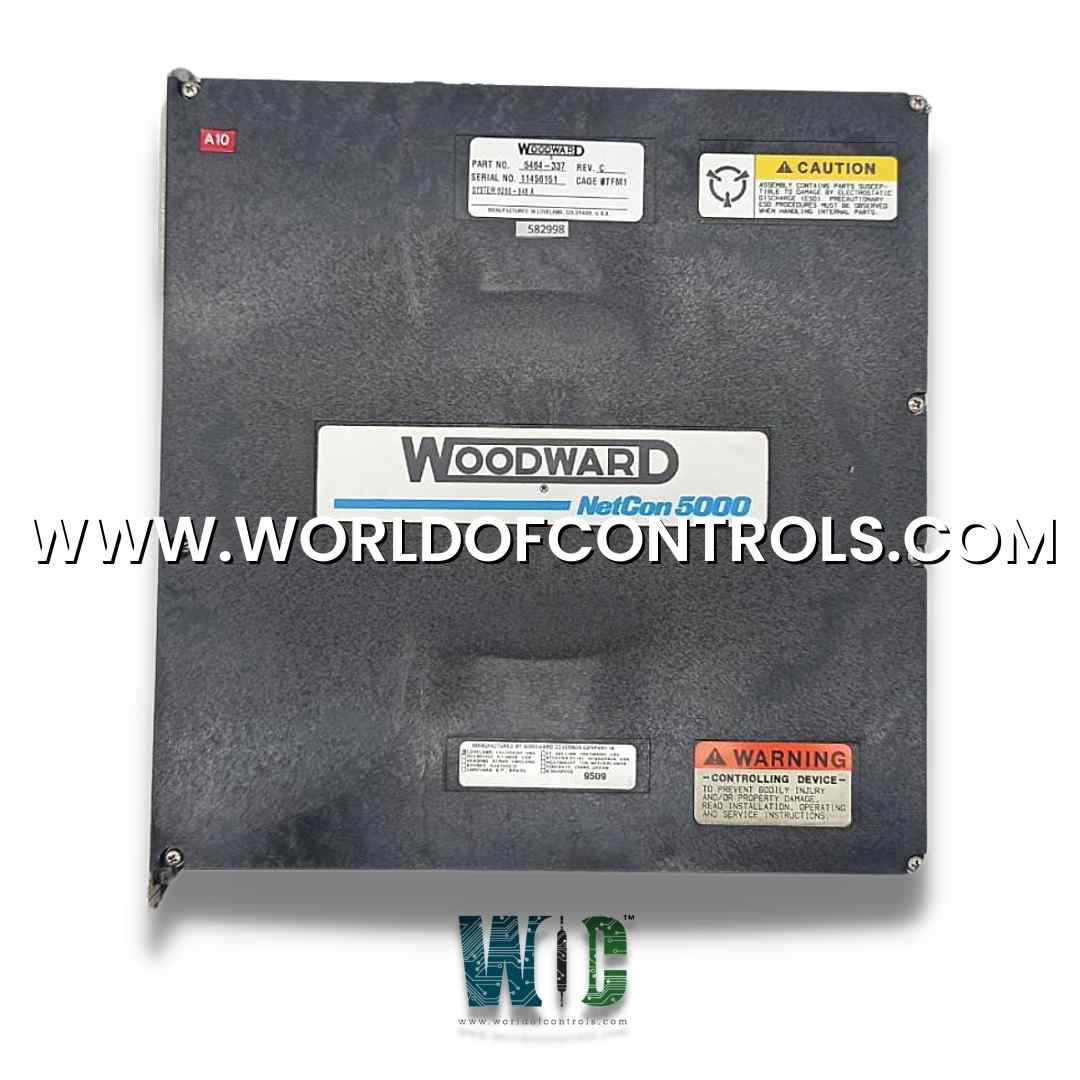
World Of Controls understands the criticality of your requirement and works towards reducing the lead time as much as possible.
5464-337 - Analog Input Module is available in stock which ships the same day.
5464-337 - Analog Input Module comes in UNUSED as well as REBUILT condition.
To avail our best deals for 5464-337 - Analog Input Module, contact us and we will get back to you within 24 hours.
Part Number: 5464-337
Manufacturer: Woodward
Product type: Analog Input Module
Input Voltage: 24 Vdc
Maximum Operating Current: 12 V
Number of channels: 2
Update time: 5 milliseconds
Operating Temperature: -25°C to +70°C
Isolation Protection: 3000 VDC
Power Supply: 10 - 60 VDC
Availability: In Stock
Weight: 2 lbs
Country of Manufacture: United States (USA)
FUNCTIONAL DESCRIPTION:
5464-337 is an Analog Input Module manufactured and designed by Woodward as part of the 5400 Series used in Turbine Control Systems. The module employs analog-to-digital conversion techniques, ensuring accurate and high-resolution measurement of the input signals. This high-resolution conversion allows for capturing subtle changes and variations in the analog signals, providing precise and detailed data to the control system. An analog input module is a device or component in a system that is designed to convert analog signals into digital signals. In the context of electronics and control systems, analog signals are continuous and represent varying physical quantities such as voltage, current, or temperature. The primary function of an analog input module is to interface with sensors or other devices that generate analog signals, convert these analog signals into digital form, and then pass the digital information to a computer or a programmable logic controller (PLC) for further processing.
FEATURES:
Signal Conditioning: Analog signals from sensors may need conditioning to ensure they are within a specific range or format suitable for processing. Signal conditioning may involve amplification, filtering, or other adjustments.
Analog-to-Digital Conversion (ADC): The core function of the module is to convert the continuous analog signal into a digital representation. ADC is the process of sampling the analog signal at discrete intervals and assigning digital values to these samples.
Data Transmission: The digital data is then transmitted to a central processing unit, a microcontroller, or a PLC. This information can be used for monitoring, control, or further analysis.
Resolution and Accuracy: Analog input modules are characterized by their resolution, which defines the number of digital bits used to represent the analog signal. Higher resolution allows for a more precise representation of the analog signal, leading to increased accuracy.
Compatibility: Analog input modules are designed to be compatible with specific types of sensors or signal sources. Common analog signals include voltage (0-10V), current (4-20mA), or resistance.
WOC has the largest stock of Woodward 5400 series Turbine Control System Replacement Parts. We can also repair your faulty boards. WORLD OF CONTROLS can also supply unused and rebuilt backed-up with a warranty. Our team of experts is available round the clock to support your OEM needs. Our team of experts at WOC is happy to assist you with any of your automation requirements. For pricing and availability on any parts and repairs, kindly get in touch with our team by phone or email.
What is an Analog Input Module?
An Analog Input Module is a device or component in electronic systems that converts continuous analog signals (such as voltage or current) into digital signals for processing by a computer or programmable logic controller (PLC).
What types of signals can Analog Input Modules handle?
Analog Input Modules typically handle signals such as voltage, current, or resistance. Common voltage ranges include 0-10V, and common current ranges include 4-20mA.
How does an Analog Input Module work?
Analog Input Modules work by using an Analog-to-Digital Converter (ADC) to sample the continuous analog signal at discrete intervals and convert it into a digital format. The digital data is then transmitted for further processing.